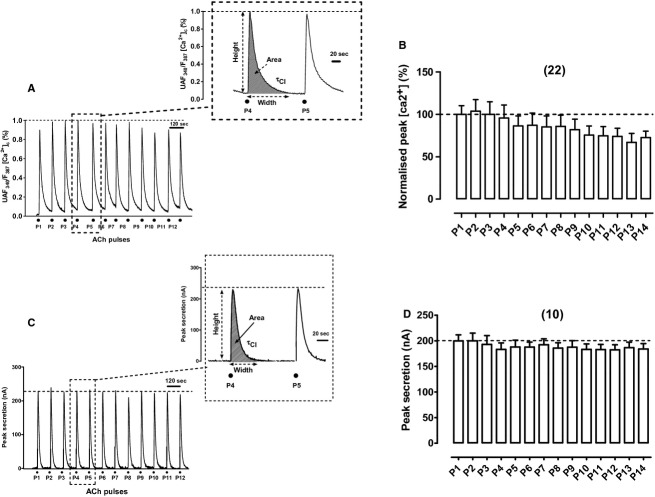Figure 1.
Cytosolic Ca2+ transients ([Ca2+]c) and catecholamine release transients elicited by repeated acetylcholine (ACh) pulses were quite reproducible. ACh pulses (30 μmol/L ACh for 5 s, P1—P12) were sequentially applied at 2‐min intervals on single‐fura‐2‐loaded BCCs (to monitor [Ca2+]c changes) perifused at 37°C, or on 5‐million BCC batches trapped in a microchamber (to monitor secretion changes), that were being continuously perifused with a Krebs‐Hepes solution at 37°C (see Methods for details). (A) Example record of the [Ca2+]c transients elicited by ACh in a fura‐2‐loaded cell; inset shows the transient generated by the ACh pulses P4 and P5 at an expanded time scale. (B) Pooled averaged data on the normalized peak [Ca2+]c height. (C) Example catecholamine release responses (in nA, ordinate) obtained from a BCC batch; inset shows the transients at an expanded time scale. (D) Averaged pooled results from the normalized secretion data obtained using the protocol of panel (C). Data in (B and D) are means ± SEM of the number of single cells or cell batches from three different cultures, shown in parentheses.

